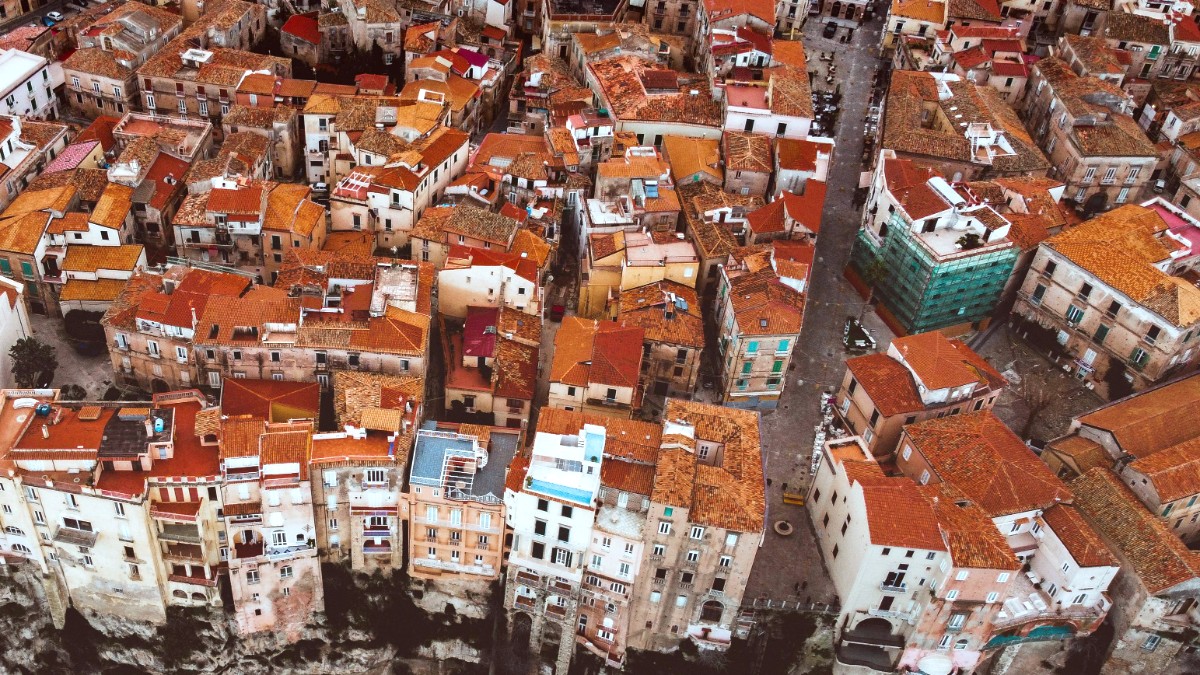
Italy
Tropea is more than a postcard setting; it is a place with a soul. Visitors often describe a profound sense of peace mixed with excitement for discovery. Tropea maintains its authenticity even while welcoming guests from around the globe. This creates an environment where everyone feels welcome, whether they seek adventure, relaxation, or cultural immersion.
The town’s allure does not just stem from its famous views or its beloved red onions. It comes from the feeling of being somewhere truly special, a place that has guarded its beauty and traditions through centuries. It is a town that encourages exploration, from its hidden alleys to its panoramic viewpoints. Each step taken here reveals a new facet of its character.
The promise of Tropea entails a journey filled with unforgettable moments, framed by some of Italy’s most stunning coastal scenery. Prepare for enchantment from its simplicity, its beauty, and its profound sense of place.
Legend attributes the town's founding to Hercules, a story hinting at its ancient roots and lasting resilience. Its strategic position on the Tyrrhenian Sea meant it was a highly sought-after location.
The earliest documented inhabitants include Greek settlers, prevalent throughout Southern Italy (Magna Graecia). Later, the Romans controlled the area, recognizing its port as a valuable asset. The Byzantine Empire then held sway, influencing the religious and artistic life of the town. This period saw the construction of many early churches and fortifications. Following the Byzantines, the Normans arrived, leaving a lasting architectural legacy, most notably seen in the Duomo di Tropea, the town's cathedral. The Aragonese and Bourbon dynasties from Spain and France also governed Tropea, contributing to the town's noble palaces and urban layout visible today.
Mythical founding by Hercules, early Greek and Roman presence.
Shaped religious and artistic life, early churches built.
Architectural contributions, including the Duomo di Tropea.
Development of noble palaces and urban design.
Iconic medieval monastery with Byzantine origins, rebuilt after earthquakes.
The historic center itself acts as a living museum. Its narrow alleys twist between noble palaces built in the 18th and 19th centuries, adorned with ornate balconies and grand facades. These buildings reflect the wealth and influence of families who resided there over generations. Ancient churches, some dating back to the Norman period, are quiet witnesses to centuries of faith and community life. Each church holds its own stories, art, and local devotions.
Tropea shines as a popular tourist destination. It gains acclaim for its scenic beauty, pristine beaches, and historic charm. The town presents a relaxed atmosphere, a stark contrast to some of Italy's larger, more bustling cities. Its relatively untouched nature, combined with a strong sense of local identity, draws those seeking an authentic Italian coastal experience.
Tropea is notably famous for its unique sweet red onions, the "cipolla rossa di Tropea." These onions hold a Protected Geographical Indication (PGI) status, indicating their origin and special qualities. They appear in countless local dishes, from savory to surprisingly sweet preparations like onion jam and even gelato.
Fresh air, carrying the scent of the sea and local flora, frequently graces the area. The sun reflects brilliantly off the water, painting the town in warm hues.
Dining here transcends mere sustenance; it forms a social experience, often enjoyed with panoramic sea views, especially at sunset. The daily rhythm of Tropea involves savoring meals, enjoying long walks, and gathering in the piazzas for an evening aperitivo.
Tropea manifests a quintessential Southern Italian experience. It features a warm, welcoming atmosphere alongside stunning natural backdrops, a rich history, and a delightful culinary tradition. It is a destination where memories are made, one sweet red onion and turquoise wave at a time.
Its beautiful beaches present opportunities for swimming, sunbathing, snorkeling, and other water sports.
The historic center invites leisurely exploration, with its labyrinthine alleys, hidden courtyards, and unexpected viewpoints.
Boat tours take visitors to sea caves and secluded coves along the "Coast of the Gods," or to the volcanic Aeolian Islands.
The sunsets from Tropea are legendary. The sun dips below the horizon, frequently painting the sky in fiery colors, with the silhouette of Stromboli volcano visible on clear evenings.
Hot and dry. Temperatures typically range from 25°C to 35°C (77°F to 95°F). High humidity can intensify the heat. Minimal precipitation.
Pleasant. Temperatures from 15°C to 25°C (59°F to 77°F). Moderate precipitation in later autumn. Sea remains warm for swimming through September.
Mild and wet. Temperatures from 10°C to 15°C (50°F to 59°F). Higher precipitation, cooler and more humid air. Quieter local rhythm.
June to early September brings the warmest sea temperatures and most sunshine.
May, June, September, and October present comfortable temperatures for walking and less intense sun.
April, May, September, and October are optimal, avoiding both summer heat and winter wetness.